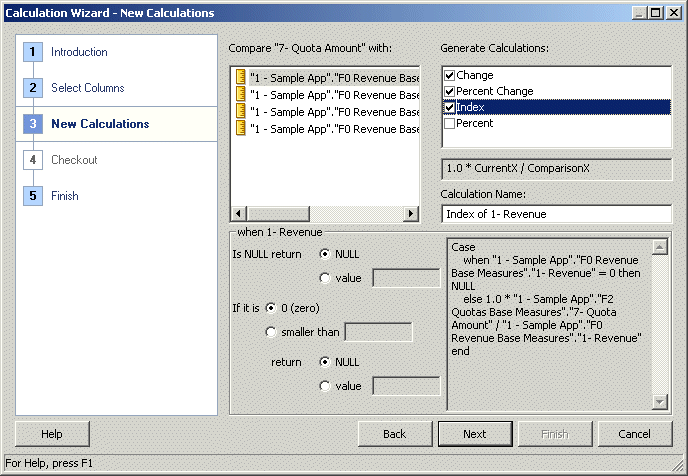Using the Calculation Wizard
You can use the Calculation Wizard to create new calculation columns that compare two existing columns, and also to create metrics in bulk.
It has a built-in mechanism to handle divide-by-zero and null cases, as well as other difficult situations. The Calculation Wizard provides an automated way to calculate the sales by quarter, the percentage of revenue, minimum and maximum values, and so on.
To start the Calculation Wizard, right-click any logical fact or dimension column in the Business Model and Mapping layer of data type numeric, and then select the option Calculation Wizard. The wizard starts with the column on which you right-clicked as the source column, and then displays the other columns in that table for comparison.
To use the Calculation Wizard:
